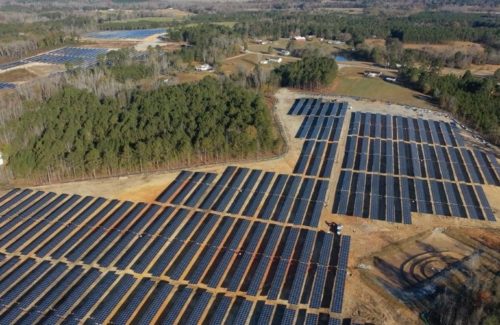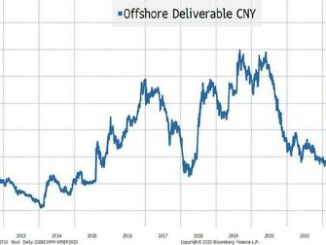
In a stark indicator of the mounting challenges facing the renewable energy sector, Pine Gate Renewables, a prominent national solar developer operating in 32 states, has filed for Chapter 11 bankruptcy. The company, founded in 2016, is putting its solar and energy storage project portfolio up for sale, along with its independent power producer business. This move encompasses a staggering 10 GW DC of projects in various stages of development, including completed facilities and those under construction.
Pine Gate’s leadership frames the bankruptcy as a strategic step to facilitate a “value-maximizing sale” through a court-supervised process, with plans to wrap up transactions within 45 days while maintaining operations.
The filing highlights ongoing turbulence in the solar industry, where even established players are grappling with financial pressures. While specific reasons for the bankruptcy aren’t detailed publicly, the decision follows significant workforce reductions at Pine Gate’s engineering, procurement, and construction subsidiary, Blue Ridge Power, which laid off over 500 employees in September 2025.
ACT Power Services, the company’s operations and maintenance arm, remains outside the bankruptcy but is also in talks for a potential sale.
CEO Ben Catt emphasized continuity for project partners and the team’s role in advancing renewable energy, but the move underscores a broader reality: investors are increasingly wary of returns in renewables amid rising costs and market shifts.
Renewables’ Struggles:
Echoes from Orsted’s Earnings WoesPine Gate’s predicament isn’t isolated. Danish offshore wind giant Orsted recently reported a staggering Q3 2025 net loss of 1.7 billion Danish kroner (approximately $262 million), a dramatic reversal from the 517 million kroner profit in the same period the previous year.
This swing reflects ongoing crises in the U.S. offshore wind market, including project delays, impairments, and the need for emergency funding—such as a $9.4 billion rights issue approved by shareholders to bolster its balance sheet.
Orsted’s challenges, including halted construction on projects like Rhode Island’s Revolution Wind due to regulatory orders, paint a picture of an industry battered by supply chain issues, inflation, and policy uncertainty.
These high-profile setbacks raise a critical question for investors: Why pour capital into renewables when returns appear elusive? The sector’s reliance on volatile markets and external support has left many projects unprofitable, prompting a reevaluation of where the real value lies in energy investments.
Where Are the Best Returns? A Look at Energy Sectors
To understand the investor exodus from pure-play renewables, we must compare performance across energy subsectors. Year-to-date (YTD) returns in 2025 reveal a clear hierarchy, with utilities leading the pack, while oil and gas exploration and oilfield services show modest but stable gains. Here’s a breakdown based on representative ETFs:
|
Sector
|
Representative ETF
|
YTD Return (2025)
|
Key Drivers
|
|---|---|---|---|
|
Utilities
|
XLU (Utilities Select Sector SPDR Fund)
|
+20.97%
|
Stable demand, regulated returns, and diversification into reliable power generation.
|
|
Oil & Gas Exploration
|
XLE (Energy Select Sector SPDR Fund)
|
+5.59%
|
Resilient oil prices amid geopolitical tensions and steady global demand.
|
|
Oilfield Services
|
OIH (VanEck Oil Services ETF)
|
+5.31%
|
Tied to upstream activity, benefiting from drilling resilience in key basins like the Permian.
|
Subsidies Drying Up: The IRA’s Fading Lifeline
A key factor exacerbating renewables’ woes is the rapid erosion of government support under the Inflation Reduction Act (IRA). Enacted in 2022, the IRA provided generous tax credits—up to 30% for solar and wind projects—to spur clean energy adoption.
But with new policies in 2025, these incentives are vanishing. The One Big Beautiful Bill Act (OBBBA), signed into law on July 4, 2025, curtails federal tax incentives for wind and solar, phasing out subsidies by 2027 and ending the residential solar tax credit outright by December 31, 2025.
States are scrambling to complete projects before credits expire, but the writing is on the wall: without this artificial boost, many renewable initiatives face higher costs and diminished viability.
This shift aligns with a broader push to eliminate market distortions from “green” subsidies, as outlined in executive actions aiming to level the playing field for all energy sources.
For hydrogen, often touted as a clean fuel, the story is even bleaker—projects remain commercially unviable without heavy government aid, relying on subsidies to bridge the gap between high production costs and market prices.
Are Wind, Solar, and Hydrogen Truly Sustainable Energy Sources?
As subsidies dry up, the fundamental question emerges: Can wind, solar, and hydrogen stand on their own as sustainable energy sources? Proponents argue yes, pointing to falling costs—utility-scale solar and wind have been competitive with natural gas for over a decade in some metrics, even sans subsidies.
There has been a global epidemic of bankruptcies in the renewable markets. Bankruptcies in Wind and Solar Companies Globally (2024-2025)
Determining an exact global count of bankruptcies in wind and solar companies is challenging due to fragmented reporting, varying definitions (e.g., Chapter 11 vs. insolvency vs. closures), and regional differences in disclosure. No single comprehensive global database exists in the searched sources, but based on aggregated data from legal firms, industry reports, news articles, and analyses, here’s a breakdown. Numbers are approximate and focus on confirmed filings or insolvencies; many small firms may not be tracked. The majority are solar-related, with wind cases being rare.
Summary of Numbers
2024: Over 120 solar bankruptcies globally (primarily in the US and China; no major wind cases reported).
US: Over 100 solar filings (including small installers and major developers).
China: At least 12 solar filings (mostly since mid-year).
Europe: A few solar cases (e.g., Meyer Burger in September 2024).
Wind: 0 reported globally.
2025: Over 75 bankruptcies globally (solar dominant, with a handful in wind; data up to November 8, 2025).
US: Around 20-30 solar filings (e.g., high-profile residential and utility-scale developers).
China: Over 50 solar filings (supply chain heavily impacted).
Europe: Limited solar cases; at least 2-3 wind filings.
Wind: At least 3 reported globally (all in 2025).
These figures are conservative estimates; actual totals may be higher due to unreported small-scale cases. Factors driving bankruptcies include high interest rates, subsidy cuts, oversupply (especially in China), and policy changes (e.g., US IRA rollbacks).
Key Examples by Year and Sector
|
Year
|
Company
|
Sector
|
Region
|
Notes
|
|---|---|---|---|---|
|
2024
|
Lumio Holdings, Inc.
|
Solar
|
US
|
Chapter 11 filing.
|
|
2024
|
iSun, Inc.
|
Solar
|
US
|
Chapter 11 filing.
content.clearygottlieb.com
|
|
2024
|
SunPower Corp.
|
Solar
|
US
|
Chapter 11 filing; major panel maker.
|
|
2024
|
Oya Renewables Development LLC
|
Solar
|
US
|
Chapter 11 filing; community solar.
content.clearygottlieb.com
|
|
2024
|
Titan Solar Power
|
Solar
|
US
|
Filing or abrupt closure.
|
|
2024
|
Sunworks
|
Solar
|
US
|
Filing or abrupt closure.
rapidratings.com
|
|
2024
|
Meyer Burger
|
Solar
|
Europe (Germany/Switzerland)
|
Insolvency filing.
xpert.digital
|
|
2025
|
Sunnova Energy International
|
Solar
|
US
|
Chapter 11 filing (June).
|
|
2025
|
Solar Mosaic (Mosaic)
|
Solar
|
US
|
Chapter 11 filing (June); solar lender.
|
|
2025
|
Pine Gate Renewables
|
Solar
|
US
|
Chapter 11 filing (November).
|
|
2025
|
Pink Energy
|
Solar
|
US
|
Filing.
billsbills.com
|
|
2025
|
MC Solar (Modern Concepts)
|
Solar
|
US
|
Filing.
billsbills.com
|
|
2025
|
Harness Power
|
Solar
|
US
|
Filing.
billsbills.com
|
|
2025
|
NM Solar Group
|
Solar
|
US
|
Filing.
billsbills.com
|
|
2025
|
ASA (American Solar Advantage)
|
Solar
|
US
|
Filing.
billsbills.com
|
|
2025
|
Kuubix Energy
|
Solar
|
US
|
Filing.
billsbills.com
|
|
2025
|
Erus Energy
|
Solar
|
US
|
Filing.
billsbills.com
|
|
2025
|
Suntuity Renewables
|
Solar
|
US
|
Filing.
billsbills.com
|
|
2025
|
ADT Solar
|
Solar
|
US
|
Filing.
billsbills.com
|
|
2025
|
Vision Solar
|
Solar
|
US
|
Filing.
billsbills.com
|
|
2025
|
Solcius
|
Solar
|
US
|
Filing.
billsbills.com
|
|
2025
|
Lumio Solar
|
Solar
|
US
|
Filing.
billsbills.com
|
|
2025
|
Expert Solar
|
Solar
|
US
|
Filing.
billsbills.com
|
|
2025
|
Shine Solar
|
Solar
|
US
|
Filing.
billsbills.com
|
|
2025
|
Suntech
|
Solar
|
China
|
Pre-restructuring (June).
energynewsbeat.co
|
|
2025
|
Runergy
|
Solar
|
China
|
Restructuring.
energynewsbeat.co
|
|
2025
|
TPI Composites Inc.
|
Wind
|
US
|
Chapter 11 filing (August).
|
|
2025
|
Emergya Wind Technologies (EWT)
|
Wind
|
Europe (Netherlands)
|
Bankruptcy (March).
windtech-international.com
|
|
2025
|
Eno energy
|
Wind
|
Europe (Germany)
|
Insolvency (October).
renews.biz
|
Wind sector distress is less widespread, often tied to project delays or macroeconomic pressures rather than mass failures.
Key Examples by Year and Sector
The table below lists notable confirmed bankruptcies from sources (not exhaustive; focuses on named companies with verified years). Many sources report aggregates without full lists.
BloombergNEF estimates that while subsidy cuts could reduce installations by 23% through 2030, long-term growth might persist due to technological advances.
Yet, skeptics counter that these technologies remain intermittent and subsidy-dependent. Wind and solar accounted for 94% of federal renewable subsidies in FY 2022, distorting markets and burdening taxpayers.
Without incentives, projects like those from Pine Gate and Orsted face higher hurdles, potentially leading to more failures. Hydrogen, in particular, struggles with efficiency losses and infrastructure needs, making it far from sustainable in a subsidy-free world.
The data suggests investors are voting with their dollars, favoring utilities and traditional energy for reliable returns. As the IRA’s era fades, the renewable sector must prove its mettle—or risk being sidelined in the quest for energy security.
Got Questions on investing in oil and gas? Or do you have a Tax Burden in 2025?
ENB Top News
ENB
Energy Dashboard
ENB Podcast
ENB Substack







